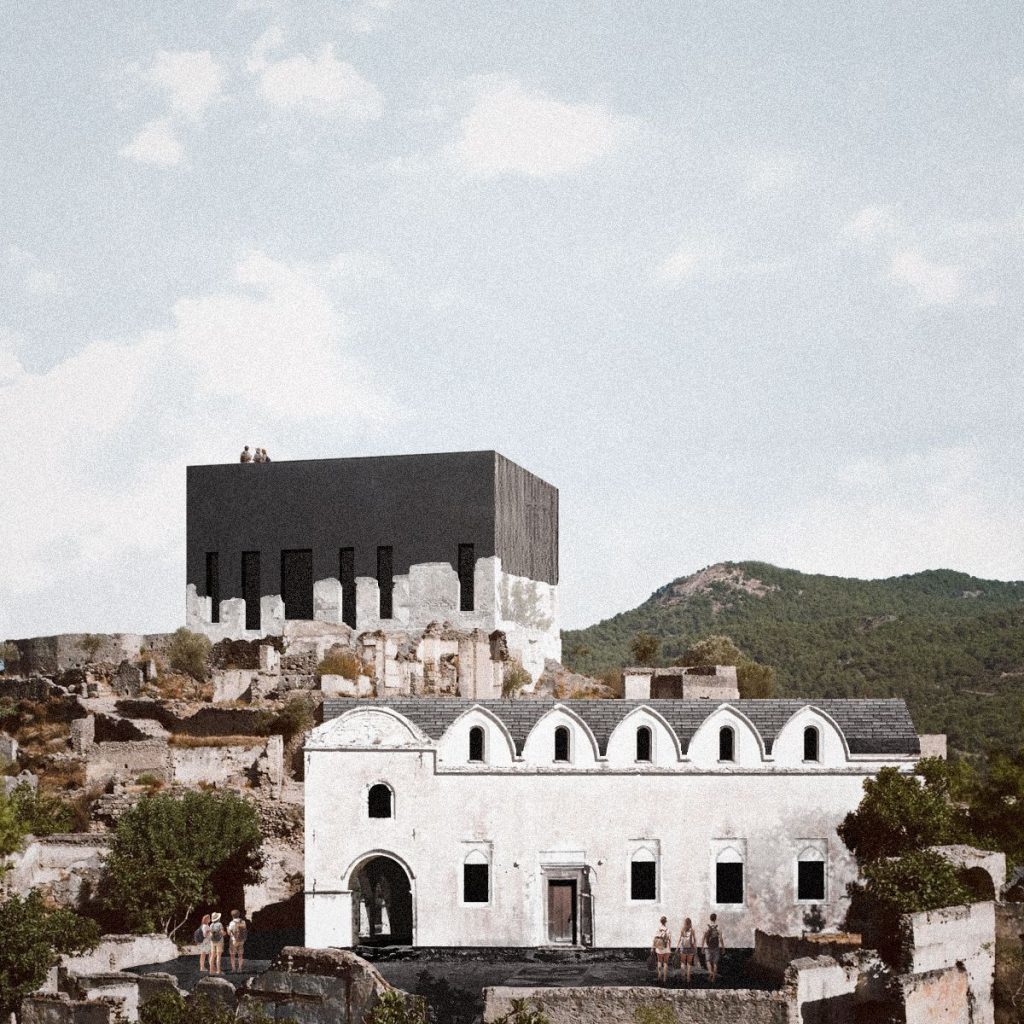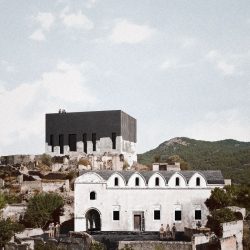
Pedro Conde . António Salgado
A path through the past, a lake in its midst, a wall to guard it all.
Ruins possess a kind of tragic beauty. They reveal the immutable end of all human life and aspiration, and yet also the strength and dignity of all that which still remains. There’s a silent pride in all degraded and yet still standing structures, a harsh and unyielding will to remain, to exist – matched only by the ever indifferent force of nature itself. This sombre and noble feeling is exactly what we wanted to explore and highlight with our proposal.
The idea came about rather quickly, greatly due to it’s clarity and simplicity: using the existing main path and closing its circuit by connecting both ends. In this way a ring is created, which encloses and protects the village, while simultaneously outlining the visiting experience in a broad gesture.
The main focus, in terms of design, was the path itself and everything it touches. Like a dark winding river, the main path courses through the houses, sculpted by them into a stream of expressive geometry. An extension of this path was required in order to connect its loose ends, thereby closing the circuit. This was achieved with the Visitor Center.
No more than a continuation of the path itself, this building adopts a similar geometry, nestling itself against the borders of the plot, and effectively functioning as a separating wall between Kayaköy and the rest of Fethiye. In our opinion, this separation is fundamental, because it blocks out the view of the immediate modern surroundings, and in doing so preserves the essence of the ruined village.
This essence, however, was greatly amplified by the introduction of a vast shallow lake, occupying the majority of the area allotted to the Visitor Center. This feature came about as a simple yet powerful landscaping solution for this lower area, which is presently occupied by a handful of modern houses and commercial spaces. A set of eight new mixed-use buildings lining the northern road is proposed in order to accommodate these displaced residents and businesses. In the center, only the sky remains, serenely reflected in a wide bowl of water, punctured by a tall black tower that harbors in its summit a novel view of the village.
Black concrete and black stone were the materials chosen for the entirety of this project. Like spreading shadows, these dark paths and structures embed themselves in the existing ruins, presenting not so much as new constructions, but rather as outlines of what once was. The rugged black surfaces emerging throughout the landscape point to an absence, to a loss – and yet, they are paradoxically brimming with life. Be it gardens or ponds, cultural spaces or restaurants, shelters or spaces of contemplation: the ruins are open to life and activity, bright and ever-changing, while still paying due homage to the past.
Despite its ruin and abandonment, perhaps even because of it, the village lives on.
This is not a burial, it’s a resurrection.
_
First prize in the Terraviva Competition “Living Ruins”, for an open-air museum in the abandoned village of Kayaköy, in Turkey.
































